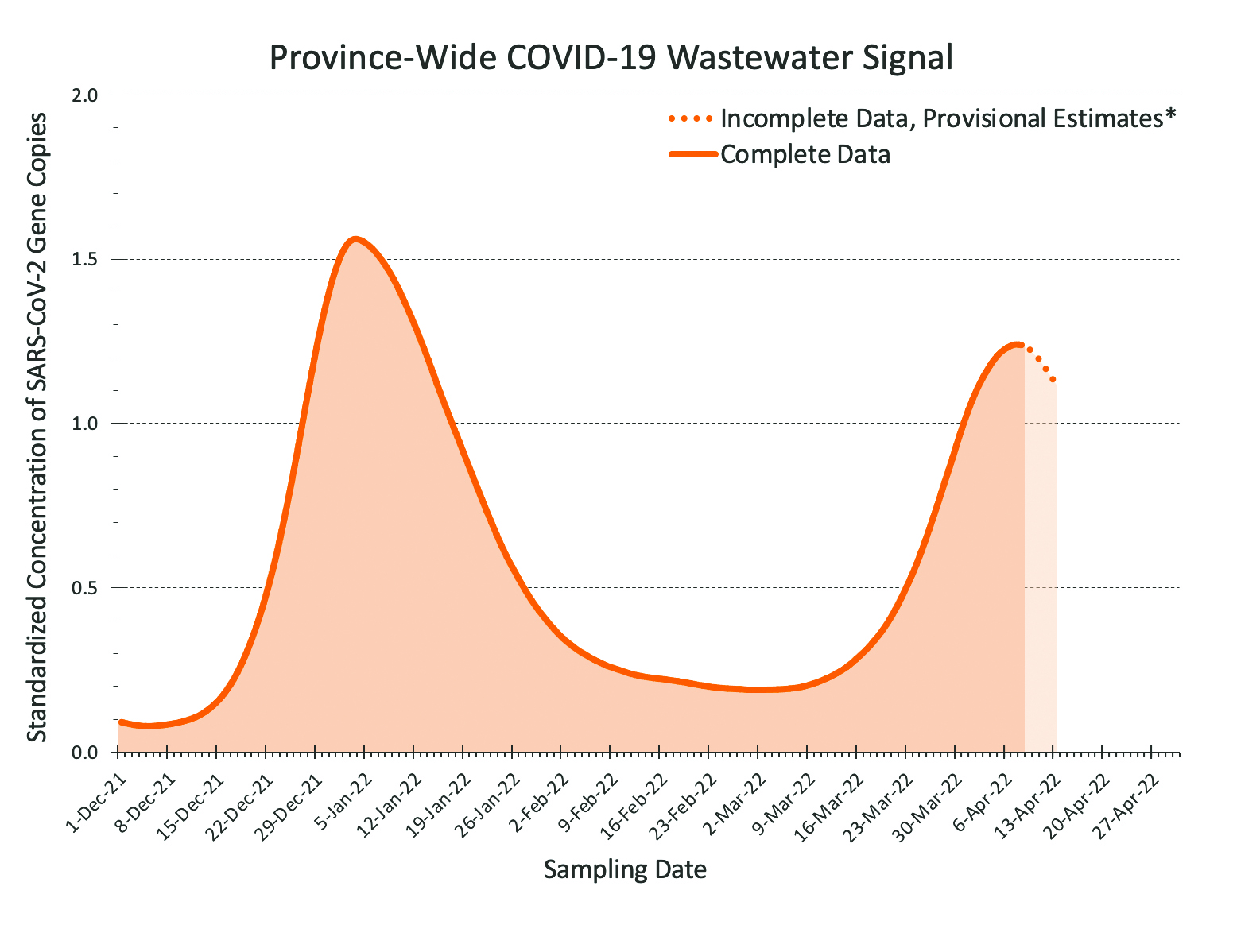Comment
Data in the waste
The holiday weekend is behind us—the first in a couple of years in which we weren’t constrained by government restrictions aimed at reducing the spread of Covid-19. While some worry long-delayed family gatherings could produce another spike, others suggest the wake of fractured families and relationships risks another type of slow-burning toll on our well-being. Meanwhile, in Shanghai, weeks of punishing lockdowns have failed to stop the spread of the virus.
In any event, we should know in a few days the impact of families gathering for Easter, Ramadan and Passover. Many remain cautious. Masks are still the norm in stores and public spaces. Still wary of crowded indoor spaces.
 Given the evidence of increased spread in our community in recent weeks, combined with data from the public health units, the Ontario Science Table and others, we can and do take reasonable measures to protect our health and those around us. It is in our hands.
Given the evidence of increased spread in our community in recent weeks, combined with data from the public health units, the Ontario Science Table and others, we can and do take reasonable measures to protect our health and those around us. It is in our hands.
Enlightened self-interest is too often overlooked as a public health measure. We face risk every day in our lives. We learn to manage risk. Some better than others. But we all do it. We consider the risk of our activity upon others—along with the sanctions and penalties for recklessness. But mostly, we get up in the morning not seeking to harm ourselves, our families and our community.
This brings us to poo.
It turns out one of the more useful indicators of the prevalence of the Covid-19 virus in a community is found in wastewater. And Ontario is among the best at mucking through our collective fecal material to determine how much virus is in it.
Samples are collected three times a week from 103 wastewater treatment plants in the province from all 34 public health units. Testing provides a benchmark of the concentration of the virus from the humans feeding the wastewater system, so to speak. (Rainwater, snow runoff and animal waste can skew the results, but these anomalies are easily detected and corrected through regular testing.)
The resulting picture is a trendline signalling the direction of the virus in the community. And the velocity of that signal change is equally vital. A sharp increase over successive periods suggests the virus is swirling unchecked around us.
Take the Ontario-wide wastewater chart produced by the Ontario Science Table presented above. (Available at covid19-sciencetable.ca/ontario-dashboard.) It is evident in mid-March that the virus was spreading quickly, persisting through the first week of April. The data aligns well with the experience of folks in my immediate sphere. At no time in the past two years have so many folks around me contracted Covid-19 as they have over the past three weeks. It appears the trend line is beginning to level off in recent days. We shall see what the holiday weekend does.
The point, however, is that we are armed with this critical information. We can use it to guide our actions and our choices. Do we head into the big box store? Or can we hold off for a few weeks? Do we remove our masks in public spaces? We can and do manage risk with the information we have. We are empowered to do so.
Widespread public testing has largely subsided, with only about two per cent of the Hastings Prince Edward Public Health Unit population tested each week. (It must be said that virus positivity, even in this small sample, also tracked the spike of cases since mid-March) Along with wastewater data, we are able to get a clearer picture of what the virus is doing in our community and gauge our relative risk.
It is valuable information. It’s like checking the weather before going out in the morning to determine whether you need a coat or hat. Or a mask.
As a parochial publication, The Times wanted to know if a more localized picture was available. As an island—sort of—the County is, in many ways, discrete from surrounding communities—culturally, demographically and in terms of population density. It would be interesting to see Prince Edward County poo data.
Alas, County wastewater isn’t part of the testing regime, according to the County’s spokesperson Mark Kerr. Kerr added the municipality is keen to do so and indeed reached out to the Province early on looking to participate, but was advised our volumes were too small. Kerr added that should the Province be interested in expanding the monitoring network, the County is ready to provide samples.
Correction: Last week, I wrote that the interim Destination Marketing Organization board terminated the employment of the County’s tourism management staff. As a governing body, it neither hires nor fires employees. Sorry.

Comments (0)